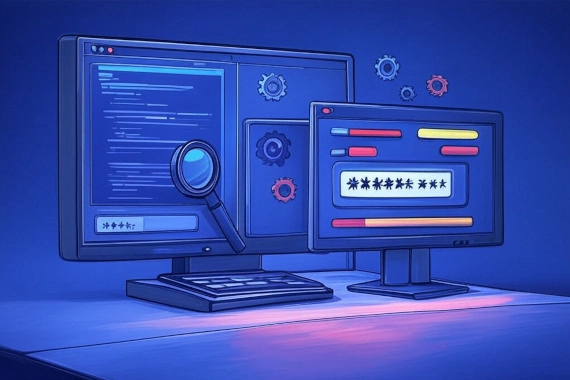
Threat Intelligence Management
Dark Web Monitoring Threat Intelligence Best Practices
What is Threat Intelligence Management? Threat intelligence management enables companies to understand their threat …

FACT: One in three cyber attacks use valid account credentials to break in (IBM).
To make matters worse, over the last year, the number of infostealers delivered via phishing emails has increased by 84%.
Hackers don’t need to break in, when they can log in.
Without visibility into your company’s leaked data, it’s virtually impossible to prevent the next attack.
This is where cyber threat intelligence (CTI) tools come in.
These tools help organizations manage threats before they turn into full-blown data breaches.
In this post, we’ll cover the different types of threat intelligence, best practices for integrating threat intelligence tools, as well as the top 10 tools your security team needs.
But first, let’s define what threat intelligence tools are.
Threat intelligence tools provide security teams with information about potential or existing cybersecurity threats targeting their organization.
These tools transform raw data into actionable intelligence that security teams can use to prevent attacks or respond effectively during one.
At their core, threat intelligence tools are similar to a radar.
Just as radar systems detect aircraft or weather patterns from a distance, threat intelligence tools provide early warning of incoming threats before they’re exploited.
They continuously monitor various sources for indicators of compromise (IoCs), threat actor tactics, techniques, and procedures (TTPs), and emerging vulnerabilities that could impact an organization’s security.
Ideally, threat intelligence tools provide context beyond simple alerts. They help security teams understand:
There are three main types of threat intelligence:
Understanding the different types of threat intelligence helps organizations recognize what data they need, but effectively managing all this information requires a centralized solution. This is where a Threat Intelligence Platform comes in.
A Threat Intelligence Platform (TIP) serves as the command center for an organization’s threat intelligence program.
It brings together disparate information into a cohesive framework that security teams can use as their central point of truth.
Unlike individual threat intelligence tools that may focus on specific functions, a TIP provides a comprehensive system for managing the entire threat intelligence lifecycle.
It collects raw data from various sources.
These often include commercial feeds, open-source intelligence, internal security tools, and information sharing communities.
It then processes the data to identify patterns, establish context, and deliver actionable insights based on the organization’s specific needs.
The main capabilities a Threat Intelligence Platform should include are:
In a world where we are drowning in information, making sense of all the threat intelligence available is a challenge. Here are some best practices for managing your threat intel tools effectively:
Despite the obvious benefits, measuring the ROI of threat intelligence isn’t straightforward. Some of the most important outcomes, like protecting your reputation and customer trust, are intangible and difficult to quantify.
Having said that, there are several quantitative metrics that you can use to measure success. The most obvious metric is the number of control changes made based on threat intelligence.
Those changes also drive your incident response time. This is based on the Mean Time to Detect (MTTD) and Mean Time to Respond (MTTR) to an incident.
Obviously, faster response times limit damage and often reduce recovery costs. Another metric is the number of times you identified an event before it was officially reported.
This includes things like resetting leaked credentials before attackers had a chance to exploit them. This also includes changes made in the vendor supply chain space due to 3rd party risks.
Finally, how much time has your team saved by automating threat intelligence tasks that were previously done manually? Data collection, contextual analysis, and manual remediation are very resource intensive.
Additionally, tracking the reduction in false positives provide another measurable efficiency gain. Leveraging threat intelligence tools saves analyst time and lets them focus on real threats.
To maximize your threat intelligence investment, it’s important to choose the right combination of tools. Here’s a list of the ten tool categories that should be part of every organization’s security toolkit.
Modern security teams need a combination of threat intelligence tools to effectively monitor, detect, and respond to threats. Here’s a list of the top 10 essential tools:

Dark Web Monitoring Threat Intelligence Best Practices
What is Threat Intelligence Management? Threat intelligence management enables companies to understand their threat …

Dark Web Monitoring Threat Intelligence Best Practices
What is a Cyber Threat Monitoring Tool? A cyber threat monitoring tool alerts security teams to potential threats before …